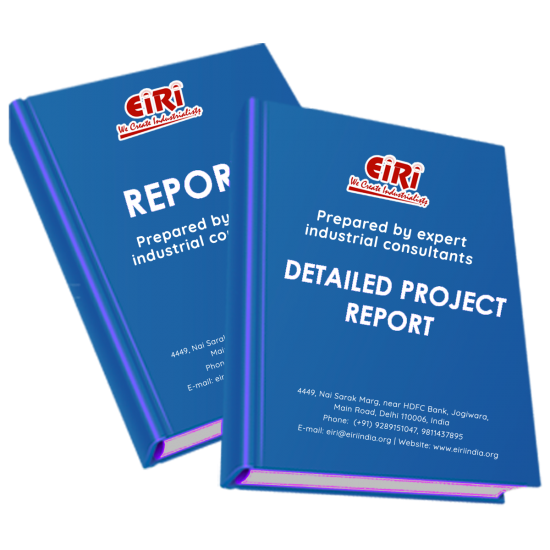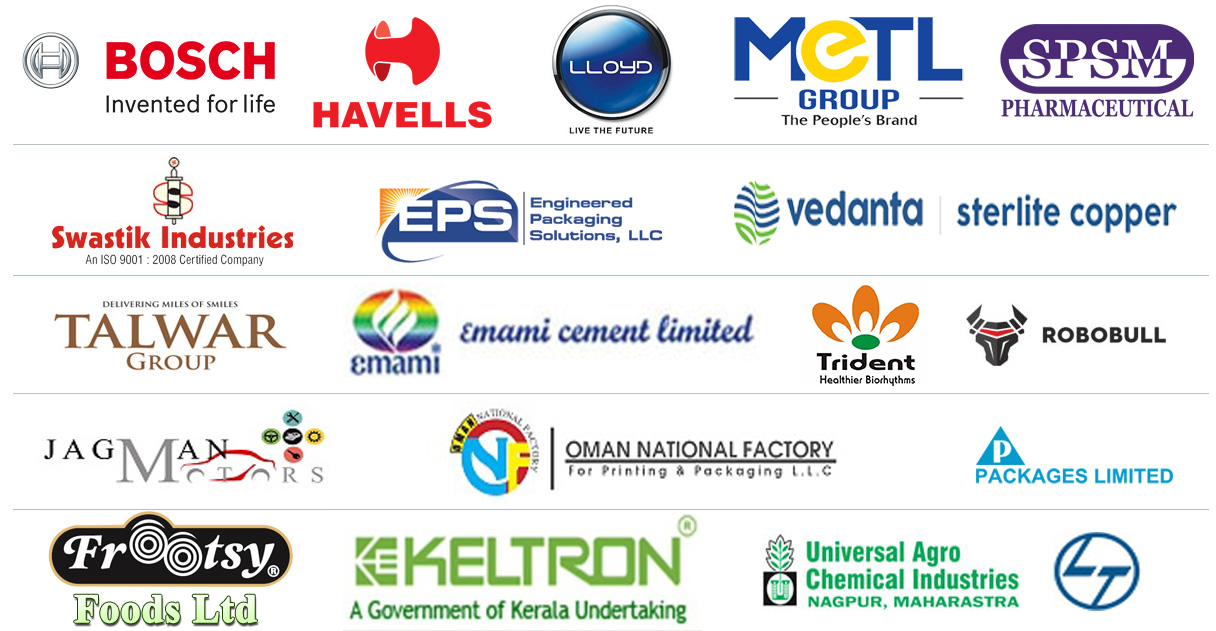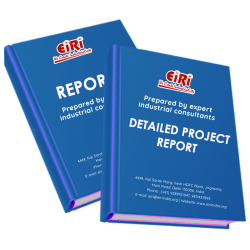Detailed Project Report on Vehicle Scrap Yard (PV/CV – 90%/10%)

- More than 45 years of experience
- Managed by expert industrial consultants
- ISO 9001-2015 Certified
- Registered under MSME, UAM No: DL01E0012000
- 24/5 Research Support
Get your quesries resolved from an industry expert. Ask your queries before report or book purchase. - Custom Research Service
Speak to the our consultant to design an exclusive study to serve your research needs. - Quality Assurance
All reports are prepared by highly qualified consultants & verified by a panel of experts. - Information Security
Your personal & confidential information is safe & secure.
VEHICLE SCRAP YARD (PV/CV – 90%/10%)
[EIRI/EDPR/4309] J.C.: 2491XL
The process of recycling a vehicle is extremely complicated as there are many parts to be recycled and many hazardous materials to remove. Briefly, the process begins with incoming vehicles being inventoried for parts. The wheels and tires, battery and catalytic converter are removed. Fluids, such as engine coolant, oil, transmission fluid, air conditioning refrigerant, and gasoline, are drained and removed. Certain high value parts such as electronic modules, alternators, starter motors, infotainment systems - even complete engines or transmissions - may be removed if they are still serviceable and can be profitably sold on; either in "as-is" used condition or to a remanufacturer for restoration. This process of removing higher value parts from the lower value vehicle body shell has traditionally been done by hand. As the process is labour intensive, it is often uneconomical to remove many of the parts.
A technique that is on the rise is the mechanical removal of these higher value parts via machine based vehicle recycling systems (VRS). An excavator or materials handler equipped with a special attachment allows these materials to be removed quickly and efficiently. Increasing the amount of material that is recycled and increasing the value the vehicle dismantler receives from an end-of-life vehicle (ELV).
After all of the parts and products inside are removed, the remaining shell of the vehicle is sometimes subject to further processing, which includes removal of the air conditioner evaporator and heater core, and wiring harnesses. The remaining shell is then crushed flat, or cubed, to facilitate economical transportation in bulk to an industrial shredder or hammer mill, where the vehicles are further reduced to fist-sized chunks of metal. Glass, plastic and rubber are removed from the mix, and the metal is sold by multiple tons to steel mills for recycling.
Recycling steel saves energy and natural resources. The steel industry saves enough energy to power about 18 million households for a year, on a yearly basis. Recycling metal also uses about 74 percent less energy than making metal. Thus, recyclers of end-of-life vehicles save an estimated 85 million barrels of oil annually that would have been used in the manufacturing of other parts. Likewise, car recycling keeps 11 million tons of steel and 800,000 non-ferrous metals out of landfills and back in consumer use.
According to the new policy, commercial vehicles aged >15 years and passenger vehicles aged >20 years will have to be mandatorily scrapped if they do not pass the fitness and emission tests. The policy does not treat a vehicle as scrap just because of its age, but considers other factors such as quality of brakes, engine performance and others. The objective is to phase out old cars, reduce urban pollution levels and stimulate automotive sales, which continues to record slowdown amid India’s post-COVID recovery phase. Additionally, the vehicle scrappage policy is also said to be a part of a larger stimulus package majorly requested by original equipment manufacturers (OEMs) to stir their demand.
Under the policy, automated testing stations and scrapping facilities will be set up in phases. Currently, 75 stations are proposed under Phase 1; this count will gradually scale up to 450–500 stations across the country. The government has also welcomed private players to invest in setting up such stations through partnership with the state governments. The government also plans to set up 50–70 facilities for scrapping vehicles in the next 4–5 years. An automobile industry body—the Society of Indian Automobile Manufacturers (SIAM)—has urged the government to allow dealer workshops to function as inspection and certification stations, as establishing new ones may not be commercially viable and delay the policy developments and implementation.
The Vehicle Scrappage Policy extends many obvious benefits, besides pollution control and improved road safety factor. Union Minister Mr. Nitin Gadkari has highlighted that raw materials derived from scrapped vehicles such as copper, rubber, steel, aluminium and plastic can be reused in new vehicles, which can help reduce the price of new vehicles and subsequently, boost sales.
However, at a broader level, the policy has a good mix of incentives for new vehicle buyers and automotive dealers and hence, is anticipated to generate positive results in the near future. This will also pave the way for a whole new business segment—‘Scrappage Facility’—which will flourish in a well-organised manner. Additionally, the policy addresses the intent of all stakeholders from exporters, importers, car dealers, micro, small & medium enterprises (MSMEs), original equipment manufacturers (OEMs) and end consumers. Prime Minister Mr. Narendra Modi, while introducing the policy stated, “The policy is an important link to achieve the circular economy of waste to wealth. It will also energize India's auto sector and metal sector under the principles of reuse, recycle and recover.” The Vehicle Scrappage Policy is expected to truly touch every aspect of the automobile industry in India, the result of which is expected to churn in the years to come.
COST ESTIMATION
Plant Capacity PV Scrap Vehicles 60 numbers per day and CV Scrap Vehicles 7 numbers per day
Land & Building (9515 sq.mt.) Rs. 14.98 Cr
Plant & Machinery Rs. 2.33 Cr
Working Capital for 1 Month Rs. 6.69 Cr
Total Capital Investment Rs. 23.96 Cr
Rate of Return 59%
Break Even Point 29%
CONTENTS
- INTRODUCTION
- VEHICLE SCRAPPAGE POLICY
- SOME INCENTIVES FOR SCRAPPING OLD VEHICLES AND BUYING NEW ONES ARE AS FOLLOWS:
- CHALLENGES
- RTO RULES FOR SELLING OF CARS AS SCRAP IN INDIA
- SOME POINTS TO NOTE ABOUT THE SCRAPPING PROCESS ARE AS FOLLOWS:
- VALUATION OF OLD CARS:
- CHALLENGES FOR INDIAN ECONOMY
- IMPORTANT DEFINITION REGARDING SCRAPING OF VEHICLE
- POWERS AND OBLIGATIONS OF RVSF
- CONDITIONS OF ELIGIBILITY OF RVSF
- ELIGIBILITY CONDITIONS
- REGISTRATION OF RVSF
- CRITERIA FOR SCRAPPING OF VEHICLE
- CERTIFICATE OF VEHICLE SCRAPPING
- APPLICABLE RULES /ACTS
- BENEFITS OF SCRAPING POLICY
- DISINCENTIVES FOR KEEPING OLD VEHICLES:
- USES AND APPLICATION
- ENVIRONMENTAL BENEFITS
- WILDLIFE PROTECTION
- CONSERVATION OF ENERGY AND RESOURCES
- MAKE SPACE
- BIS SPECIFICATION
- OPERATION OF VEHICLE SCRAP YARD
- THE COLLECTION/DISMANTLING/DE-POLLUTING/SHREDDING FACILITY SHALL TAKE ALL THE STEPS TO:
- STORAGE:
- PRE-CONDITIONS FOR STORING ELVS
- AN ELV SHALL NOT BE STORED WITHOUT REMOVING THE BATTERY, ADDITIONAL SALIENT POINTS ON STORAGE OF ELVS:
- TRANSPORTATION
- DE-POLLUTION PROCESS
- DE-POLLUTION SEQUENCE
- A. BEFORE LIFTING VEHICLE
- B. LIFT THE VEHICLE ON DE-POLLUTION FRAME OR LIFTING DEVICE
- DRAIN FUEL TANK
- C. REMOVE VEHICLE FROM DE-POLLUTION FRAME OR LIFTING DEVICE
- FOR LIQUID HAZARDOUS SUBSTANCES
- A. WASTE OILS
- B. TRANSMISSION OIL
- C. BRAKE FLUIDS & CLEANERS
- D. FUEL AND FUEL FILTERS
- E. COOLANT (ANTIFREEZE)
- FOR SOLID HAZARDOUS SUBSTANCES
- A. LEAD ACID BATTERIES
- B. AIR FILTER
- G. RUBBER PARTS
- H. GLASS PARTS
- I. ELECTRONIC PARTS
- J. REFRIGERANT GASES
- K. AIRBAGS
- L. CATALYST
- DISMANTLING & SEGREGATION
- IN THE CASE OF M1 CATEGORY VEHICLES:
- IN THE CASE OF LL AND L2 CATEGORY VEHICLES:
- SHREDDING AND SEPARATION AND PROCESSING OF RESIDUES
- TECHNOLOGIES FOR THE ELV RECYCLING PROCESS
- TECHNOLOGIES FOR PROCESSING RESIDUES - SEGREGATION OF NON-FERROUS METAL FRACTIONS:
- OTHER TECHNOLOGIES
- TECHNOLOGIES FOR TREATMENT OF SEGREGATED MATERIALS
- INPUT/OUTPUT DATA
- PROCESS FLOW CHART
- RECOMMENDED TOOLS & EQUIPMENT FOR PRE-TREATMENTS:
- UTILITIES PER MONTH (ESTIMATED)
- SUPPLIERS OF PLANT AND MACHINERY
- SUPPLIERS FOR VEHICLE RECYCLING PLANT
- SUPPLIERS OF DG SETS
- SUPPLIERS OF EOT CRANE
- SUPPLIERS OF POWER TRANSFORMERS
- SUPPLIERS OF ELECTRICAL PANEL
- SUPPLIERS OF AIR POLLUTION CONTROL EQUIPMENTS
- SUPPLIERS OF AIR COMPRESSORS
- SUPPLIERS OF PLATFORM WEIGHING MACHINE
- SUPPLIERS OF MATERIAL HANDLING EQUIPMENTS
- SUPPLIERS OF FIRE FIGHTING EQUIPMENTS
- PROJECT CYCLE
- PRINCIPLES OF PLANT LAYOUT
- MAJOR PROVISIONS IN ROAD PLANNING FOR MULTIPURPOSE SERVICE ARE:
- PRINCIPLES OF PLANT LAYOUT
- PLANT LOCATION FACTORS
- PRIMARY FACTORS
- RAW-MATERIAL SUPPLY:
- MARKETS:
- POWER AND FUEL SUPPLY:
- WATER SUPPLY:
- CLIMATE:
- SPECIFIC FACTORS
- TRANSPORTATION:
- WASTE DISPOSAL:
- LABOR:
- REGULATORY LAWS:
- TAXES:
- SITE CHARACTERISTICS:
- COMMUNITY FACTORS:
- VULNERABILITY TO WARTIME ATTACK:
- FLOOD AND FIRE CONTROL:
- GENERATION & MANAGEMENT OF WASTES/GREEN BELT
- WASTE WATER (ESTIMATED)
- WASTE (ESTIMATED)
- HEALTH SAFETY AND ENVIRONMENT
- ANTICIPATED ENVIRONMENTAL IMPACTS
- CONSTRUCTION PHASE
- OPERATION PHASE
- MITIGATION MEASURES (PROPOSED)
- HSE REQUIREMENT
- PROPOSED IMPLEMENTATION SCHEDULE
- PROJECT FINANCIALS
- BASIS & PRESUMPTIONS (FOR PROFITABILITY WORKINGS)
- PRELIMINARY PLANT LAYOUT
- CAR SCRAP DEALERS
APPENDIX – A:
- 01. PLANT ECONOMICS
- 02. LAND & BUILDING
- 03. PLANT AND MACHINERY
- 04. OTHER FIXED ASSETS
- 05. FIXED CAPITAL
- 06. RAW MATERIAL
- 07. SALARY AND WAGES
- 08. UTILITIES AND OVERHEADS
- 09. TOTAL WORKING CAPITAL
- 10. TOTAL CAPITAL INVESTMENT
- 11. COST OF PRODUCTION
- 12. TURN OVER/ANNUM
- 13. BREAK EVEN POINT
- 14. RESOURCES FOR FINANCE
- 15. INSTALMENT PAYABLE IN 5 YEARS
- 16. DEPRECIATION CHART FOR 5 YEARS
- 17. PROFIT ANALYSIS FOR 5 YEARS
- 18. PROJECTED BALANCE SHEET FOR (5-10 YEARS)
How to Make Project Report?
Detailed Project Report (DPR) includes Present Market Position and Expected Future Demand, Technology, Manufacturing Process, Investment Opportunity, Plant Economics and Project Financials. comprehensive analysis from industry covering detailed reporting and evaluates the position of the industry by providing insights to the SWOT analysis of the industry.
Each report include Plant Capacity, requirement of Land & Building, Plant & Machinery, Flow Sheet Diagram, Raw Materials detail with suppliers list, Total Capital Investment along with detailed calculation on Rate of Return, Break-Even Analysis and Profitability Analysis. The report also provides a birds eye view of the global industry with details on projected market size and then progresses to evaluate the industry in detail.
We can prepare detailed project report on any industry as per your requirement.
We can also modify the project capacity and project cost as per your requirement. If you are planning to start a business, contact us today.
Detailed Project Report (DPR) gives you access to decisive data such as:
- Market growth drivers
- Factors limiting market growth
- Current market trends
- Market structure
- Key highlights
Overview of key market forces propelling and restraining market growth:
- Up-to-date analyses of market trends and technological improvements
- Pin-point analyses of market competition dynamics to offer you a competitive edge major competitors
- An array of graphics, BEP analysis of major industry segments
- Detailed analyses of industry trends
- A well-defined technological growth with an impact-analysis
- A clear understanding of the competitive landscape and key product segments
Need Customized Project Report?
- Ask for FREE project related details with our consultant/industry expert.
- Share your specific research requirements for customized project report.
- Request for due diligence and consumer centric studies.
- Still haven't found what you're looking for? Speak to our Custom Research Team
About Engineers India Research Institute:
Note: We can also prepare project report on any subject based on your requirement and country. If you need, we can modify the project capacity and project cost based on your requirement.
Our Clients

Our Approach
- Our research reports comprehensively cover Indian markets (can be modified as per your country), present investigation, standpoint and gauge for a time of five years*.
- The market conjectures are produced on the premise of optional research and are cross-accepted through associations with the business players
- We use dependable wellsprings of data and databases. What's more, data from such sources is handled by us and incorporated into the report
Why buy EIRI reports?
- Our project reports include detailed analysis that help to get industry Present Market Position and Expected Future Demand.
- Offer real analysis driving variables for the business and most recent business sector patterns in the business
- This report comprehends the present status of the business by clarifying a complete SWOT examination and investigation of the interest supply circumstance
- Report gives investigation and top to bottom money related correlation of real players/competitors
- The report gives gauges of key parameters which foresees the business execution






















